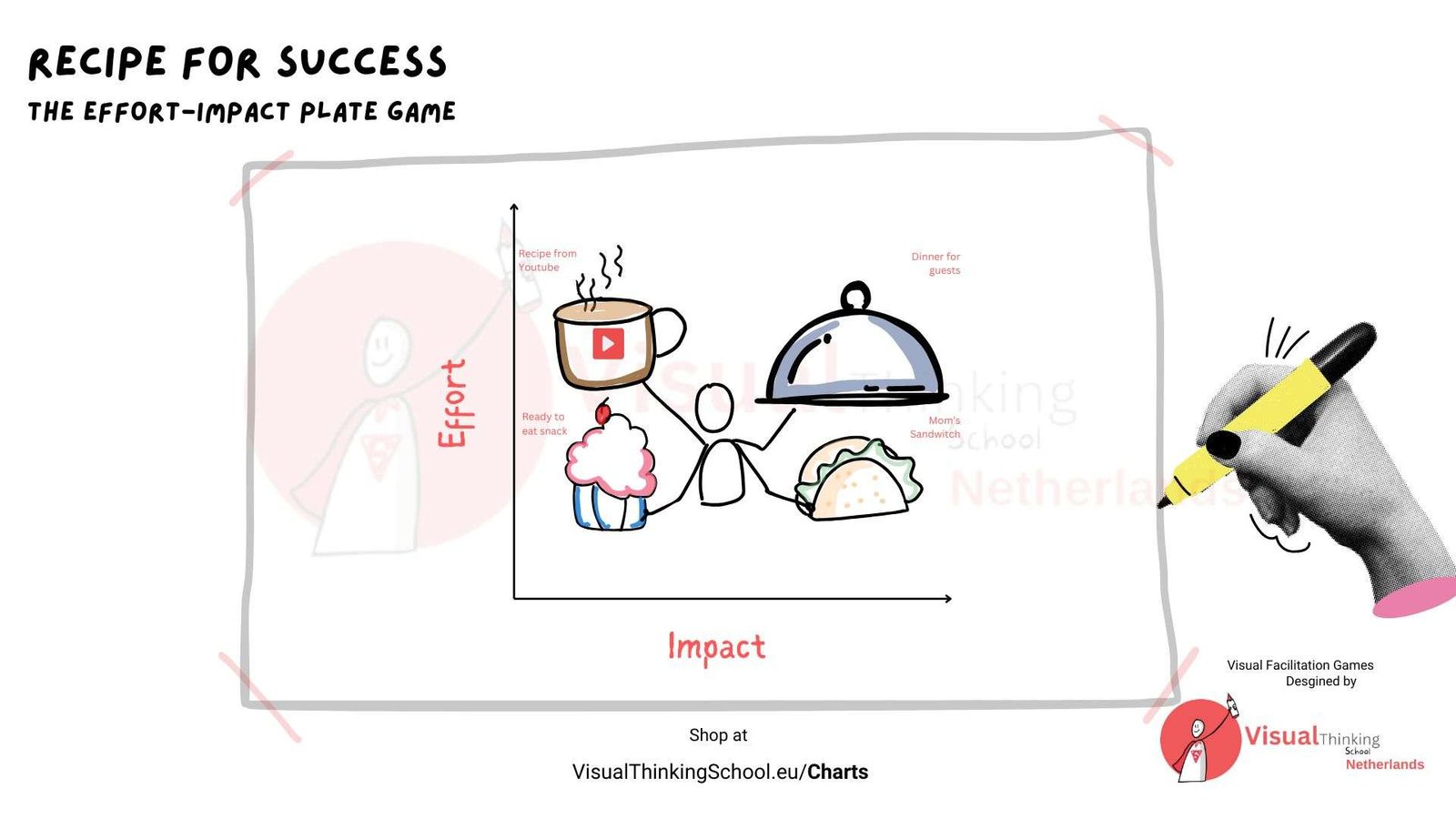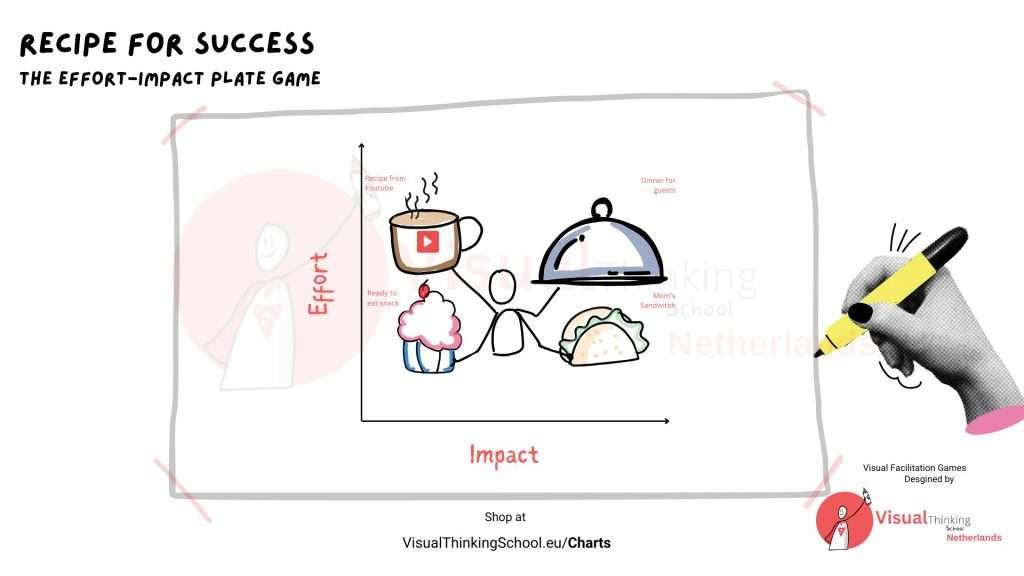
A Facilitation Game For The Effort-Impact Plate
The Effort-Impact Plate game helps teams analyze and prioritize tasks by visualizing them through a metaphorical “recipe” framework, weighing effort and impact. Inspired by everyday meal types, the game divides tasks into four distinct categories—YouTube Recipe, Dinner for Guests, Ready-to-Eat Snacks, and Mom’s Sandwich—each with unique levels of effort and impact. Through this game, participants assess tasks based on how much effort is required and the potential outcome (impact), aligning on which actions to prioritize for the best results.

Use Effort-Impact Plate when:
This game is especially useful in project planning, backlog grooming, and strategic decision-making, where balancing effort and impact can streamline processes and clarify goals.
You can purchase facilitation charts for this game at Visual Thinking School Charts.
Objective: Generate tasks or ideas that need to be categorized.
Game Mechanics:
This quick brainstorming phase ensures that each participant’s input is captured, allowing the group to work with a broad spectrum of ideas.
Objective: Place each task on the graph, using the meal metaphor to decide its effort and impact.
Game Mechanics:
For added insight into the effort-impact approach, see this task prioritization frameworks.
Objective: Vote on which tasks should be prioritized for action.
Game Mechanics:
This voting process visually reveals the group’s consensus, helping the team easily identify which tasks or ideas to focus on.
Objective: Define next steps for each prioritized task.
Game Mechanics:
At the end of the game, take a moment to reflect as a group. Ask questions like, “Did anything surprising come up during categorization?” or “How can we balance effort and impact better in the future?”
Effort-Impact Plate is a lighthearted, visually structured game that helps teams make strategic, informed decisions on prioritizing tasks. By breaking down priorities into fun yet insightful categories, teams can understand the impact-effort balance in a practical, relatable way. For those interested in mastering visual facilitation techniques and guiding teams through engaging activities like this, explore our Visual Facilitation Certification Course at Visual Thinking School Courses.
Using a familiar metaphor like meals simplifies the complex task of prioritization, allowing teams to view tasks with fresh perspectives. By incorporating game elements such as dot votes and dice rolls, Effort-Impact Plate keeps participants engaged, while also ensuring balanced participation. For ready-to-use charts that will elevate this and other facilitation exercises, visit Visual Thinking School Charts and make every session a recipe for success!

Piyuesh is the founder of Visual Thinking School, Netherlands. He is passionate about empowering organizations and classrooms with Visual Thinking Skills. He conducts trainings onBusiness Sketchnotes™ , Classroom Sketchnotes™, Visual Business Storytelling™, Graphic Facilitation™
In his free time, piyuesh likes practicing Aerial Yoga, Acro yoga, Krav Maga and Pole workouts.